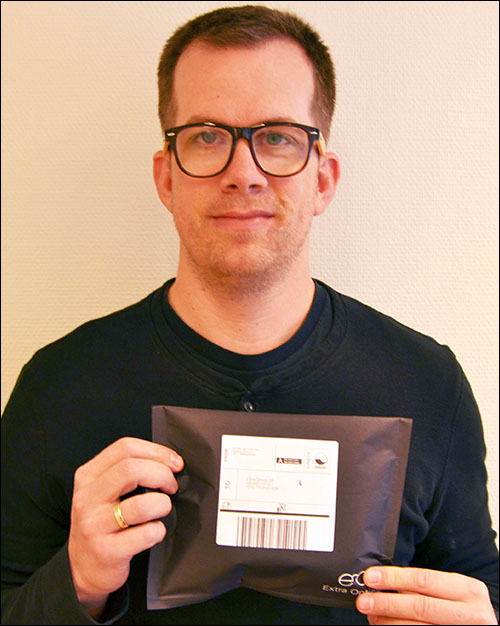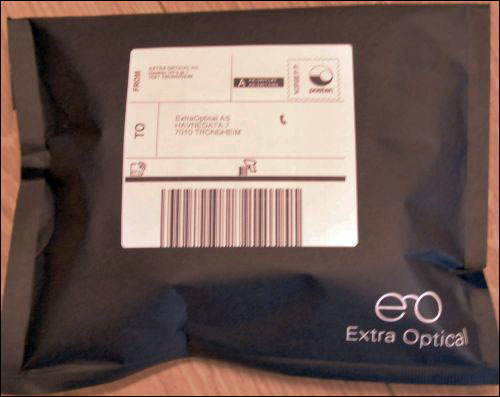Norwegian online eyewear company Extra Optical is piloting an RFID-based shipping solution provided by Bring to automatically track every pair of glasses it ships to customers, and to trigger a notification to each customer when his or her shipment is about to be delivered to that person’s home or office. Bring, a division of Norway Post (Posten Norge), provides mail and logistics services to business customers throughout Norway and the Nordic area.
The system that Extra Optical is using consists of RFID labels on envelopes, readers installed at Posten distribution centers, and software provided by Consignor that links each parcel label’s unique ID number with the corresponding shipment and shares that data with Extra Optical. The software also forwards a message to the shipper indicating when the glasses will be delivered.
Extra Optical is a discount eyewear provider that sells eyeglasses manufactured in Asia. Each pair is received at Posten’s Trondheim distribution facility, and is then shipped to customers throughout Scandinavia. Tracking the shipped glasses on their way to customers has proved challenging for the company, says Øystein Sandø, Extra Optical’s CEO.
The firm sells as many as 2,500 to 3,000 pairs of glasses during a busy month, with each pair typically shipped in a small package. In some cases, the glasses fail to arrive at a customer’s address, and the company then has little visibility into where the glasses may have become delayed or lost, or if they were even shipped as expected.
Extra Optical typically used untracked shipping methods in order to keep its expenses down, Sandø says. If the company were to sign up for an option that tracks packages by scanning the bar code printed on each parcel’s shipping label, he explains, it would pay the same rate as those shipping two kilos of goods, even though a pair of eyeglasses weighs only a few grams. The firm brought its problem to Bring, which was researching a method of using technology to automate the tracking of shipments.
The solution that Extra Optical is now piloting enables it to track each item without the exorbitant cost of a tracking service employing bar codes. Bring provided Extra Optical with an RFID printer to print and encode the labels for all goods that it ships within Norway. Because other carriers are not using RFID, the optical company utilizes standard labels for items being sent to recipients in other countries, such as Sweden.
Extra Optical uses software supplied by Consignor to print each item’s RFID label and link the RFID tag’s ID number with the correct shipment number. Once the label is created, the Consignor software sends a standard electronic data interchange (EDI) message to Posten Norge so that the carrier has a record of all shipments soon to be arriving.
When parcels arrive at the distribution station in Trondheim, their tag IDs are interrogated by RFID readers installed onsite, and the shipment number linked to each particular ID is updated in Posten Norge’s own system. Extra Optical can then view that data. Once the glasses depart the DC, the tags are again read and the shipment’s status is updated, which Extra Optical can also view. Then, if a customer makes a request regarding a pair of glasses already ordered, he or she can visit the Extra Optical website, view his or her shipping number and then use that number to view when the glasses were received and shipped from the Posten terminal in Trondheim.
The system was taken live during the fourth quarter of 2015, Sandø says, and will be piloted for approximately one year. Already, it has provided benefit by proving that a pair of glasses was shipped. “Earlier, we couldn’t always tell a client what had happened,” he says. The company lacked confirmation as to whether a given order had actually been shipped and was merely delayed, or needed to be replaced. In the past, the company often would have simply had to replace a pair of glasses, and the customer might end up receiving two pairs. “Now, not only do we have a reduction in loss,” he states, “we can provide information to our clients.”
Bring is also piloting the technology with athletic women’s clothing company Get Inspired. In both cases, Consignor provides the software for printing the labels to be placed on goods as they are shipped to customers, and the software then links each RFID tag ID to the appropriate shipment number. “Then our software sends a standard EDI message to the carrier, Posten Norge,” says Henning Backe, Consignor’s country manager.



